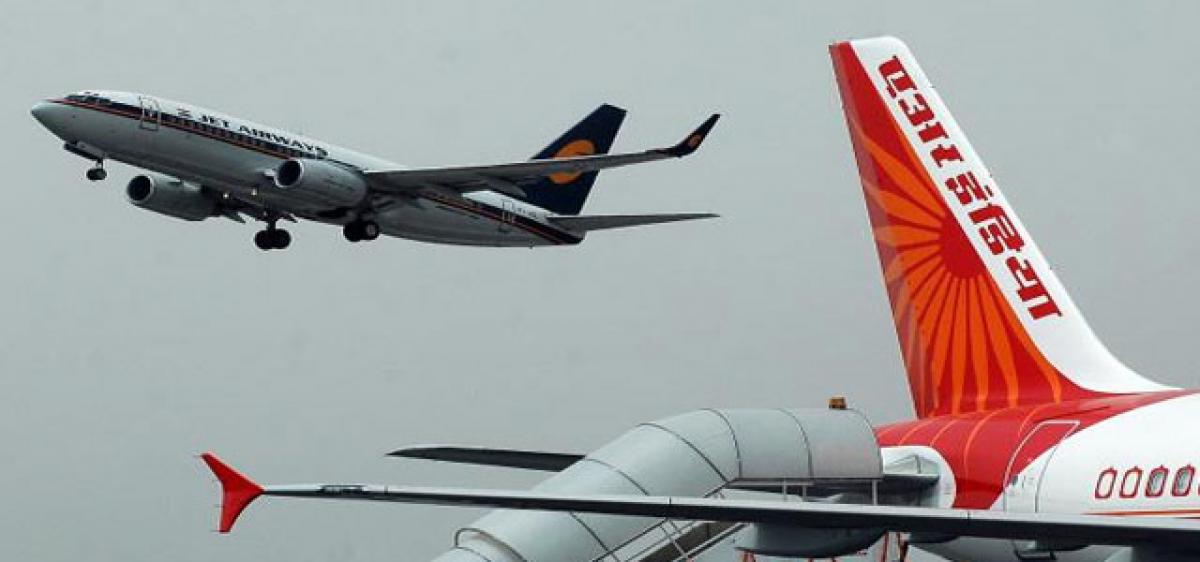Live
- G20 Leaders Will Talk About Climate, Taxes, and Trump's Return in Brazil
- COP29: CDRI announces $8 million funding for 12 projects to address climate crisis
- Anti-Telgu remarks: Actor Kasthuri Shankar moves court for bail
- Samsung AR Smart Glasses Set to Launch in 2025, Featuring Ray-Ban Meta-Like Design
- Kerala Industries Minister confident that new policy will boost plantation sector
- Madras HC plans inter-departmental monitoring committee to combat drug use in TN
- Bihar: Spotted deer dies due to heart attack in Banka district
- Mushtaq Ali T20: Shami to spearhead Bengal bowling attack, Gharami named captain
- Kharge's clarion call to oust Maharashtra's BJP-backed MahaYuti
- Why Ukraine’s Use of US Missiles Against Russia Could Lead to World War 3
Just In

The union aviation ministry authorised five airlines to operate on regional routes. This is expected to offer air connectivity between big cities and small towns. To enable the middle-class to travel by air, the fares are capped at Rs 2,500 for an hour-long flight of about 500 km.
The union aviation ministry authorised five airlines to operate on regional routes. This is expected to offer air connectivity between big cities and small towns. To enable the middle-class to travel by air, the fares are capped at Rs 2,500 for an hour-long flight of about 500 km.
The scheme is certainly impressive given the fact that hardly 5 per cent of Indians travel by air now. Estimates suggest that out of this, 90 per cent travel between metros, and 60 per cent of air passenger traffic is between Delhi and Mumbai. This reveals the importance of UDAN scheme aiming at connecting tier-2 and tier-3 cities.
The Government of India launched the Ude Desh Ka Aam Nagrik (UDAN) scheme to ensure inexpensive regional air connectivity. This aims at connecting metros with 70 small cities, among which 31 are at present unconnected by the aviation sector. Central and State governments are to subsidise this low-cost air travel through multiple concessions, besides imposing a levy on certain routes.
Under UDAN, the government provides tax sops to airlines besides concessions on power, water and other utilities at the regional airports. However, this ambitious plan is not without its skeptics. The financial viability is an issue, though the traffic may not be the problem. Smaller aircraft are more expensive to operate. The Andhra Pradesh-based Air Coasta shutting down its operations from February 2017 legitimises these fears. Similarly, Air Pegasus has ceased its operations from July 2016 due to financial problems.
However, the availability of bigger airports is yet another problem. The airlines need to achieve clusters and economies of scale to make the operations financially viable as the government subsidy accounts only for a part of the losses incurred due to low-cost travel offered under this scheme.
Meanwhile, the Government of India plans to spend Rs 4,500 crore in developing 50 airports under this regional air connectivity scheme. Calling it a populist measure, critics doubt whether a market viability study has been undertaken before launching the scheme. It may be recalled here that a number of airport terminals in several smaller cities were upgraded or expanded by the UPA government at a considerable cost.
Experience suggests that these are either unused or underutilized, strengthening the apprehensions over the market viability of the grandiose regional air connectivity plan of Modi dispensation, though any such endeavour is certainly commendable from the point of view of millions aspiring to fly.
There are nearly 400 empty airports in India while another 16 airports are underserved, which means they do not have more than a flight a day. The UDAN scheme will help in making these ghost and underserved airports active, while helping India’s hinterland to get onto the civil aviation map. This is expected to stimulate growth.
The unveiling of regional air connectivity scheme is a realisation of Prime Minister Narendra Modi’s election promise to the people. Making these flights economically viable is a daunting task before the NDA government.

© 2024 Hyderabad Media House Limited/The Hans India. All rights reserved. Powered by hocalwire.com







